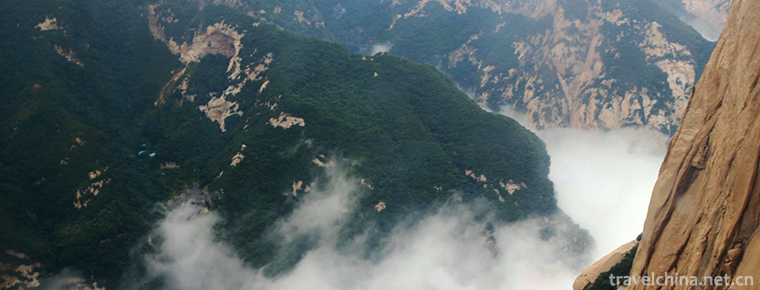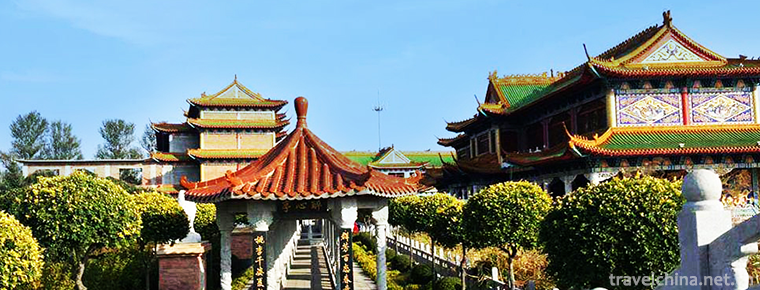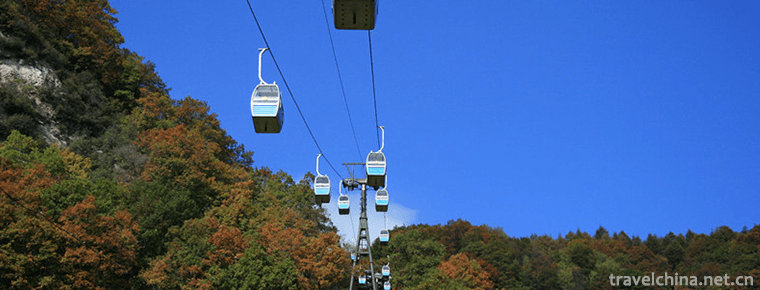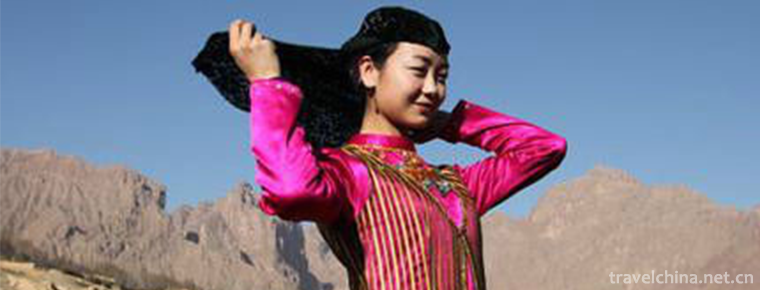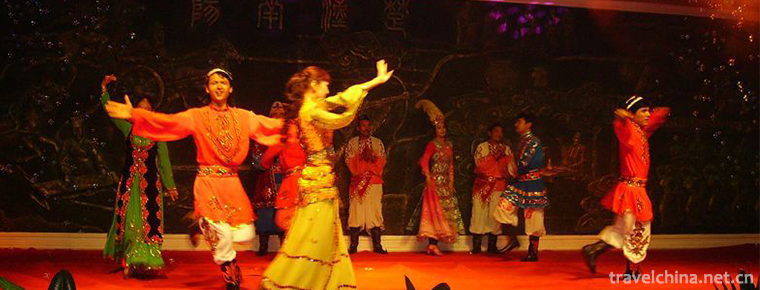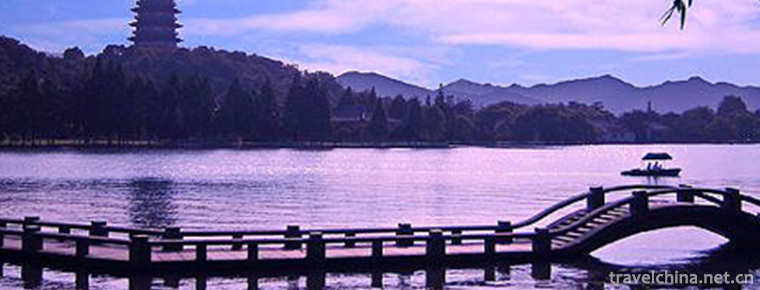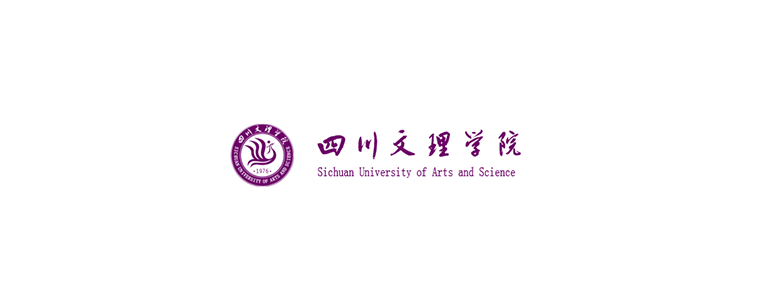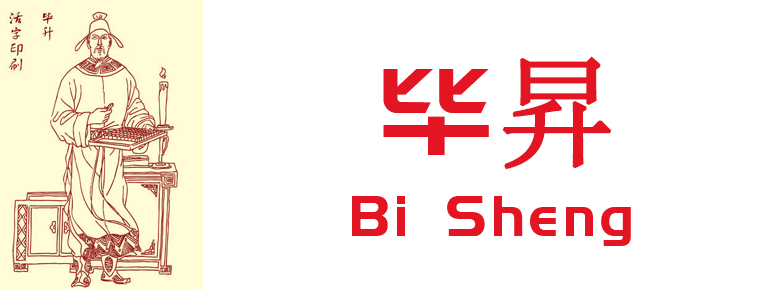Eight Diagrams Palm
Eight Diagrams Palm
The Eight Diagrams Palm, also known as the Traveling Eight Diagrams Palm and the Eight Diagrams Linked Palm, is a traditional Chinese boxing with the main changes of palm method and walking. It is one of the famous types of boxing in Chinese traditional Wushu, and it is widely spread. There are five schools of Eight Diagrams Palm, which was founded by Dong Haichuan, a Wen'an in Langfang City, Hebei Province, in the late Qing Dynasty.
According to legend, Dong Haichuan was inspired by Taoism during his travels in the south of the Yangtze River and sorted out in combination with Wushu. Bagua palm was first spread around Beijing. It has spread all over the country in the past hundred years and abroad (such as Southeast Asia and the United States).
It is called Bagua Palm because of its crisscross movement, which is divided into four sides, four corners and eight directions. It is similar to the hexagrams in the Eight Diagrams of Zhouyi. Some Eight Diagrams Palm-Lao Quan scores often interpret the theory of boxing by means of hexagrams, and represent the basic Eight Diagrams with eight hexagrams.
On June 7, 2008, Bagua Zhang was approved by the State Council as the second batch of national intangible cultural heritage list .
Basic knowledge
Bagua Palm was created by Dong Haichuan, a Wen'an man in Langfang City, Hebei Province. Its main inheritors are Yin Fu, Cheng Tinghua, Shi Jidong, Ma Weiqi, Liang Zhenyuan, Fan Zhiyong, Liu Dekuan and Song Yongxiang. Bagua palm is a traditional boxing widely spread in China. It is one of the three famous fists of Neijiaquan. It is also a reflection of Taoism's health preservation, fitness and self-defense of Yin and Yang palms.
It takes eight stakes as turning palm work and eight circle hands as a whole. It is based on one to eight steps of pendulum, buckle and step-by-step method, takes circle walking as the basic movement route, takes palm method as the core, and moves like clouds and streams all over the body during turning. The body method requires that twisting and turning should be coordinated and complete, walking like a dragon and turning like an eagle. The main techniques are: piercing, inserting, splitting, lifting, crossing, colliding, buckling, turning, supporting and so on. Bagua palm is a kind of boxing that combines health preservation and skill and morality preservation. It is Dong Haichuan's forerunner who combines martial arts and internal skills, and combines them with his own rich experience to create a unique palm-based technical means.
Bagua palm is different from other boxing in its movement form of walking along the circle and "wading mud steps, scissors legs, riding steadily like a sedan chair", snapping and breaking, and avoiding the right and slanting. And in the treatment of disease, internal merit, skill and morality, there are obvious effects. Especially in the aspect of internal merit and moral cultivation, the performance is more prominent.
The second batch of Bagua Palms announced by the State Council has become a national intangible cultural heritage. In September 2009, the State Council appointed Ren Wenzhu as the representative successor of the Bagua Palm Project, a national intangible cultural heritage.
Schools
Shi school, Yin school, Liang school, Cheng school, Zhang school, Shi school, Palace school, Li school, Meng school, etc.
origin
According to the textual research, Dong Haichuan, a Wen'an native of Langfang City, Hebei Province in the Qing Dynasty (about 1797-1882), was inspired by Taoist practice during his travels in the south of the Yangtze River, and was sorted out in combination with Wushu. Dong Haichuan used to be a coach in the Suwang Palace of the Qing Dynasty. Therefore, Bagua Palm was first spread around Beijing. It has spread all over the country in the past hundred years and abroad (such as Southeast Asia and the United States).
Historical situation
During the Xianfeng period of the Qing Dynasty, Dong Haichuan taught Bagua Lianzhang in Beijing, which is called Bagua Lianzhang for short. Dong Haichuan was born in Jiaqing three years (October 13, 1797) and died in Guangxu eight years (1882). Its original name was Jide, then Haichuan, a native of Zhujiawu, Wen'an, Langfang City, Hebei Province.
Dong Haichuan has been a martial artist since childhood and travels all over the world. A famous teacher, visited Gao you, studied various boxing techniques, picked up its essence, and organized a complete set of boxing routines -- Eight Diagrams Palm. Dong Lao Xianshi fled to the Suwang Palace in Kyoto on suspicion of murder because of the injustice in the countryside. Hidden silence, do not show the edge. No one in the government knows that Dong Gong is a skilled attacker. At that time, there was the head of the Suwang Palace Nursing House, who volunteered to perform martial arts in front of the martial arts court. Suwang Dayue. Guests and many people in the mansion gathered to watch the crowd. At this time, King Su called Dong Gong to offer tea. Because of the crowded audience, it was difficult for Dong Gong to enter. In a hurry, he leaped over the wall with a tray and a pot and sent tea to the king to offer tea to his guests. Surprised, King Su asked, "Are you also good at martial arts?" Answer: "Know a little about one or two". King Su ordered Mr. Dong to perform on the spot.
The first teacher offered his art calmly, only to see him turn left and right, with agile footwork, and his handwriting was haunted and changeable. The body turns left and right, when high and low, when standing up, when falling, like a kite drilling in the woods, running clouds and running water, gushing. The audience was stunned and silent. At this moment, the first teacher lifted up his breath, leaped several feet high, rotated down and landed silently. Wang Ye was shocked and asked, "What's the name of this skill?" At that time, Dong Lao's ancestor thought about it. This palm was created by himself, but it was not named. In his anxiety, it was named "Eight Diagrams Palm". From then on, Bagua palm began to appear.
Later, according to the theory of Eight Diagrams, he collated and supplemented it to make it more and more perfect. This is the following remark. At that time, King Su ordered Dong Gong to compete with the chief executive in order to distinguish between high and low. In less than two rounds, Dong Gong knocked his opponent down with one slap, and his opponent shyly walked away. Later, Suwang ordered Dong Xianshi to be the head of the Suwang Palace Nursing House.
From then on, Dong Lao-xian's fame was greatly shaken and his apprenticeship lasted for many days. The most famous disciples are Yin Fu and Cheng Tinghua. After the death of Dong Lao's ancestor, Yin Fu and Cheng Tinghua carried forward the Eight Diagrams Palm and inherited the past. It flourished among the people in the Cixi period of the late Qing Dynasty.
Introduction to Wugong
"Eight Diagrams" was first seen in Zhouyi: "Two Yisheng Four Images, Four Images Live Eight Diagrams". Bagua originally refers to eight directions, namely, north, south, east, west, northwest, southwest, northeast and southeast. Bagua palm is mainly palm method, its basic content is eight palms, which is in the number of Eight Diagrams. In boxing, it is required to walk round with swing buttons, and walk all eight directions, instead of a line or four corners as in general boxing, so it is called "Eight Diagrams Palm". In fact, there is no internal relationship between the Eight Diagrams Palm and the Eight Diagrams.
The popular Eight Diagrams Palm in 2013, also known as "Traveling Eight Diagrams Palm" or "Dragon-shaped Eight Diagrams Palm", was handed down by Dong Haichuan (1796-1882) in Beijing. The Eight Diagrams Palm is a kind of boxing which is mainly composed of palm movement and walking. It combines martial arts with guidance and intonation, both inside and outside. It not only has the function of strengthening the body, but also can exercise the skills of attack, defense and combat. It is loved by the broad masses of the people and enjoys a good reputation in Wulin.
The Eight Diagrams Palm is a kind of boxing which is mainly composed of palm-changing and walking (walking circle). That is to say, draw a circle with the radius of one arm's length, and then walk along the circle. It combines martial arts with guidance and intonation, both inside and outside. It can strengthen the body and exercise the skills of attack and defense. There's also an exception. There's a set of sixty-four handshakes where you punch in a straight line.
The traditional Eight Diagrams Palm has been studied by many famous masters. Based on the theory of Eight Diagrams, it takes eight steps in a circle and eight palms in a single palm as the basic palm position. The routine is very flexible and not fixed. The different practitioners have different routines. However, many exercises of Eight Diagrams Palm have not completely followed this tradition since 2013.
Bagua palm pays attention to the flexibility of body method, requiring practitioners to change the distance and direction between the enemy and ourselves, avoid the oblique attack, wait for opportunities to attack, and pay attention to the random response, giving full play to the flexible and changeable characteristics of palm-to-palm boxing and hook. Its techniques include pushing, supporting, covering, splitting, bumping, moving, cutting, holding and so on. The movement characteristics of Bagua palm are: one walk, two eyes, three seats and four turns. These characteristics provide the necessary training conditions for the development of shortcuts and flexibility, especially the strength of lower limbs. Bagua palm is based on the internal skill of "piling" and "mud step", takes twisting and turning as the basic movement form, and takes the change of palm method as the main means of attack. Internal and external training, emphasizing physical and mental training, brisk footsteps such as dragon swimming in the air, twisting, turning and turning the palm method endlessly changeable. It is a combination of strength and softness, kicking and wrestling. Wrapping, drilling and turning, avoiding right and slanting, dotting around the circle, and following each other endlessly.
The Bagua palm takes the palm to replace the fist, walks the circle, breaks through the traditional boxing which takes the boxing as the main factor, and walks the straight line, has opened a new world for Chinese martial arts. Its footwork is mainly lifting, stepping, swinging and buckling, rotating left and right continuously. Bagua palm takes walking as the top, requests the idea like flying a flag, the air like clouds, the rolling drill wrapping, the dynamic and static round support, the combination of rigidity and softness, and the combination of odd and positive. A good hand in boxing is really like a dragon swimming, with its head missing its tail; if it is windy, it is invisible to see its shadow; if it looks ahead, it often makes the opponent feel dizzy. In order to respond to the enemy, we can avoid the reality and hit the empty, hand-to-shoulder collision.
Bagua palm technique is based on actual combat, while it has a unique effect in strengthening the body and prolonging the illness.
Bagua palm has other pairs of hands, such as knives, swords, sticks, mandarin ducks and indigo, which require the same footwork as palm. Bagua knife, also known as "Bapan knife", is 1.4 meters long and weighs 2 kilograms. Its length and weight exceed the general single knife.
The main instruments of Bagua palm are:
Meridian Mandarin Duck (Sun and Moon Qiankun sword), Bagua knife, Bagua stick, Bagua gun, Spring and Autumn knife, body gun, serial sword, serial pure sun sword, serial dragon stick, five-line stick, Kunlun shovel, etc.
basic content
Eight female palms, also known as the old eight palms, that is, single palms, double palms, homeopathic palms, back palms, turning palms, grinding palms, three-wearing palms and turning palms. The content of the eight palms is not entirely the same everywhere. They are represented by lions, deer, snakes, kites, dragons, bears, phoenixes and monkeys. They are also represented by double palms, shaking palms, wearing palms and turning palms as the basic content of the eight palms. Each palm can evolve many palms, known as eight palms and eight or sixty-four palms.
Bagua palm has the form of solo training, pair training and sanda. According to the records of Lao Quan, the Eight Diagrams Palm Quan System still has eighteen Arhat Hands, seventy-two dark feet and seventy-two leg amputations, but seldom passed down. All the instruments of the Eight Diagrams System are knives, guns, swords, halberds, etc. The training method still embodies the characteristics of following changes, walking with weapons, changing with steps and connecting momentum. In addition, there are some short double instruments, such as Mandarin ducks, eans, chicken claws, wind-fire wheels and judges'pens. It is rare in other kinds of boxing. Bagua palm is conducive to the training of flexibility, speed and endurance, especially for the training of lower limb strength. After the founding of the People's Republic of China, Bagua Palm was listed as a national Wushu performance and competition item.
Characteristic
It's a quick-paced, changeable, agile and changeable body when dealing with each other. The boxing proverb says that it "looks like a dragon, looks like an ape, sits like a tiger, turns like an eagle plate". Its basic skills are based on pile steps and walking steps. Body shape requires a head, waist, buttocks, shoulders and elbows, solid stomach and chest, crotch suction. The footwork requires smooth landing, clear swing buttons, distinct virtual and real, muddy walking, sedan chair moving forward, and tibia rubbing (ankle joints close to each other). When walking around the circle, the inner foot goes straight, the outer foot buckles inside, and the knees embrace each other, so the crotch should not be open. The body method stresses twisting, spinning, turning and turning, and is round and vigorous.
There are two types of hand: dragon's paw and ox's tongue. The main techniques are push, support, tie, collar, move, block, intercept, buckle, catch, catch, hook, hit, seal, close, flash, exhibit 16 methods. Requirements can advance and retreat, can chemical energy, virtual and real combination, infinite change. Every palm should be issued with the waist as the axis, the whole body, the inside and outside of the body, the outside heavy hands, eyes and body, and the inner spiritual strength.
The movements of the Eight Diagrams Palm require lifting the top of the neck, loosening shoulders and hanging elbows, opening the chest and solid abdomen, standing waist and slipping buttocks, crouching knees and grasping the ground with ten toes. The Eight Diagrams Palm is based on the principle of "rolling drills, twisting and turning, walking with each other, changing palms, walking like dragons, turning like monkeys, changing momentum like eagles, and powerful like tigers". It is based on the principle of bending and straightening brakes, disturbing and stirring, and static braking.
Bagua palm can be divided into three steps: fixing shelf, living shelf and changing shelf. "Fixed shelf" is a basic skill, which requires one move and one style, rules and regulations, slow and not fast, in order to have correct posture, firm pile steps and smooth walking. We should earnestly achieve the "Nine Essentials of Initiation", namely collapse (collapse of waist), buckle (including chest), lift (tail lug lifting, Valley lifting), top (top of head, tongue, top of hand), wrap (wrap arm), loose (loose shoulder, sink), droop (sag). Elbow, contraction (crotch root, shoulder socket contraction), lifting and tumbling (arm inside and outside rotation) and other essentials; do not straighten the chest, lift abdomen, nurturing Qi, clumsiness (known as the three major diseases), "live shelf" the main practice of coordinated action, so that the basic essentials in the transformation of skilled use. "Change the shelf" requires internal and external unification, meaning to follow, change freely, insert freely, not limited by the sequence of boxing sets, so as to be light as feathers, lightning as lightning, stable as rocks.
Technical requirements
—— Bagua palm has many merits and principles, mainly stressing on——
Eight essential factors
1. Three-shape three-potential: three-shape is "walking like a dragon, moving like a monkey, changing like an eagle". Three potentials are "walking like mud, arms like twisting ropes, turning like grinding".
2. Three empty three in one: three empty namely: "Hand heart empty, foot heart empty, heart empty". Three-in-one means "the combination of mind and Qi, the combination of Qi and Qi, the combination of force and parataxis".
3. Three circles and three tops: three circles means "the back should be round, the arms should be round, the mouth of the tiger should be round". Three crowns are "the tongue, the palate, the top of the head, the front of the palm".
4.Three wrap three sensitivities: three wrap namely "gas wrap, shoulder wrap, elbow wrap". Sanmin means "Mind should be sensitive, eye should be sensitive, palm should be sensitive".
Nine theories
Nine theories are: body, shoulder, arm, finger, elbow, stock, foot, Valley Road and leg.
1. On body: head upright, body straight, spiritual strength, waist as the axis, span as the pioneer.
2. On Shoulder: Shoulder should be loosened. Shoulder acupoints should be opened when loosening. Qi permeates the whole body.
3. Argument arm: The forearm is circular and stretches out its internal strength, like a curved curve, like a straight straight curve, like a bow with infinite power.
4. On finger: eyebrows with index finger, upper finger with middle finger, little finger with little finger, big finger with little button.
5. On the elbow: the forehand pushes outward, the hind hand falls downward, the foreelbow aligns with the heel, and the hind elbow aligns with the hind toe.
6. On stocks: front lead, rear sit.
7. On foot: the inside foot is straight out, the outside foot is slightly buckled, the foot buckle is small, the foot pendulum is large, and it is as smooth as mud.
8. On Valley Way: Uplift Qi and Tongdu Vessel on the femoral way, then connect to Ren Vessel, Qi is like Dantian, which is called lifting anus and strengthening abdomen.
9. On the leg: the upper leg drives the cross, the lower knee drives the ankle.
Song day: Ten to nine rationales are clear, and the changes of flowers are infinite.
If you can understand this wonderful, round and arbitrary.
Skill and stress
Palmtop manipulation
The palm type includes upper, lower, vertical, embracing, piercing, splitting, lifting, lifting, collapse, bumping and ye palms.
The main techniques are: pushing and leading, moving and splitting. Interception through flash, adherence. Cutting, splitting and twisting. Collapse and collision, slice and turn over.
Step step method
Step type: break step, buckle step, step, half-horse step, etc. Footwork: Rising and falling swing buttons, moving forward and backward and retreating, breaking, inserting and flashing, etc.
Leg legged method
The legs look like shears and walk like mud. Leg method: swing buckle kicking, crushing and kicking, splitting and cutting. Bagua palm has open legs and dark legs, but it is mainly composed of legs and palms, and dark legs.
Body style
Bagua palm shape like a dragon, waist like an axis, body method pays attention to twisting and wrapping drilling, round and not stagnant, body with walking, palm with changing, step with palm, up and down coordination.
There is no movement around the body, twisting and turning like running water, upside down like a proud dragon.
Skills and principles
Take the palm as the law, take walking as the function, dissolve kick, kick and wrestle as one, follow each other and live endlessly. Avoiding the right is inclined, following the trend, unpredictable, out of the shadow. The needle is hidden in soft and sticky, while the cold bomb explodes quickly like lightning and thunder.
Bagua practitioners start with walking steps, based on internal work, orthopaedic, ventilation, understanding, skilled and bright change. With eight palms as the mother palm, practical palms and routines of different styles have evolved. Bagua palm has many kinds of instruments, especially the Bagua knife.
Bagua Palm is not only one of the three famous Neijiaquan in China, but also widely spread in various parts of the country. It is also popular among international friends.
Yin formula
Bagua palm, take the lead, receive and release, go and return, change the virtual and solid step in the process of reference.
Walk like the wind, stand like nails, button swing change step clear. The waist is the gill, the Qi is the flag, and the eyes are the first to see the six ways of hands and feet.
Travel like a dragon, sit like a tiger, and move like rivers and mountains. Yin and Yang hands, turn up and down, sink shoulders, fall elbows and return to the salvation.
Hold six in one, don't scatter, breath all over your body naturally. Buckle and swing step, disc carefully, switch into and out of the waist.
Seven feet, three hands, all hands and feet together without delay. Hip away, shoulder bump, lean against the dark knee.
Higher than strangled, lower than blocked, windward access is the first. The trick of numeral is in the palm of one's hand, and it is in vain to use pure skill.
representative figure
Hai Chuan Dong
Bagua Palm was created by Dong Haichuan, a Wen'an native of Hebei Province. Dong Haichuan was born in the eighteenth year of Jiaqing in the Qing Dynasty (1812 AD) and died in the ninth year of Guangxu (1882 AD). In the Spring and February of the Ninth Year of Guangxu in Qing Dynasty, the disciples erected monuments in front of the tombs of Xiaoniufang Village outside Dongzhimen, successively with four inscriptions. As a result of the destruction during the Cultural Revolution, on the initiative of Mr. Li Ziming and others, the leaders of the Eight Diagrams jointly moved to Wan'an Cemetery in Beijing in 1980 and set up a monument as a memorial.
"Tomb of Dong Xianshi"
Mr. Dong Yanhaichuan is a housekeeper in Nanzhu, Wen'an City. Less knight-errant, no rule of production. Faguo's solution is to help the poor and help the dangerous, spare no effort. Good sex field hunting, day by day galloping between Maolin, beasts for it to open up easy. As long as he travels all over the country, he travels through Wuyue, Bashu and Shu. All famous mountains and rivers are full of adventures and wonders to strengthen his mind. Later encounter Huang Guan, give Wushu, then Jingquan brave. Unexpectedly, middle-aged people follow Sima Gong's fate, intentionally acting as eunuchs. When Mr. Lu was jealous and angry, suspicion arose among his colleagues and he was changed to the official residence for the purpose of eliminating suspicion. Because of old age, you have to live in an outdoor apartment. Artists, from Tongxian to Gongjia and Daguan, and thousands of others, each teach an art. Outside the touring stopper, several people each hold sharp weapons and strike them in a circle. Mr. Wu resists from all sides as swiftly as a whirlwind. The magnificent spectators are all called the gods who are afraid of their richness. At the end of his life, he opens his hands and feet like a man of iron. The more three days he dies, the more he thinks he is feathering. More than a hundred people in Duzhongmen, who were buried outside Dongzhimen and away from the city, were mournful and unforgettable, arguing and expressing their hearts.
Guangxu Nine-Year Spring and February Standing Stone
The inscription, which was written by 56 disciples of Dong Haichuan, is the earliest description of Dong Haichuan's life. It provides the most important historical data for the early spread of Bagua Palm and the textual research of Dong Haichuan's life. Among the disciples, Zhang Zhankui, Yin Fu, Maweiqi, Shi Jidong, Cheng Tinghua, Song Changrong, Fan Zhiyong, Liang Zhenyuan and Liu Fengchun are the most famous. There are two main schools of Bagua palm: one is Cheng Tinghua's Longzhao palm, the other is Yin school represented by Yin Fu's Niutong palm. The other schools are basically related to these two schools.
Dong Haichuan's life is a life of great contribution to martial arts and a life of legend. His creation of the Eight Diagrams is a lifetime of eternal fame and gratitude to future generations for the benefit of mankind. The Eight Diagrams Palm, which combines health preservation and fighting skills, will remain young forever. Dong Haichuan's ancestors will live forever
After Dong Haichuan's "immortal death", with the efforts of his disciples, the Eight Diagrams Palms came into being and spread widely. In its birthplace, Beijing, Bagua Palm has become a very influential school of Wushu. After the second generation of disciples, Bagua Palm began to develop to Hebei, Shandong, Tianjin and other surrounding areas. After several generations of efforts, Bagua Palm has spread to all parts of the world in 2013, and become a martial art chosen by many people.
It has been more than 150 years since the Eight Diagrams fell into Shenzhou. Later, they studied their theories and enriched their skills. Especially the second generation masters, Yin Fu, Cheng Tinghua, Fan Zhiyong, Song Changrong, Song Yongxiang, Liu Fengchun, Liang Zhenpu, Shi Jidong and Liu Baozhen, enriched and perfected the skills of Bagua Palm, naturally penetrated into different styles, and made it more colorful in Shenzhou.
Because all of Dong Haichuan's disciples are trained as artists, Dong Haichuan teaches them in accordance with their aptitude, thus forming different styles of Bagua palm schools. Each branch of Bagua Palm has both common characteristics and prominent personality characteristics.
The main schools that have been formed are: Yin's Bagua Palm handed down by Yin Fu, Cheng's Bagua Palm handed down by Cheng Tinghua, Shi Jidong's Bagua Palm handed down by Shi Jidong, Fan's Bagua Palm handed down by Fan Zhiyong, Liang Zhenyuan's Bagua Palm handed down by Liang, Gao Wencheng's Bagua Palm handed down by Gao Wencheng, Song Changrong and Song Yongxiang, Liu Baozhen's Bagua Palm handed down by Liu, and Liu Fengchun Secret. Liu's Eight Diagrams Palm and Zhang Zhankui's Eight Diagrams Palm.
Bagua palm is the bare-handed practice of sickle, which has been verified by the historians of martial arts. It is said that Dong Haichuan Meridian Mandarin Duck and Bagua turn their hands to be suitable for battle with sickles or in the forest.
In fact, the horror of the Eight Diagrams Palm is still in the weapons. The empty hand palm is a cover-up, even the name of the Eight Diagrams Palm is a cover-up. The essence of the Eight Diagrams Palm is in its unique weapon meridian Yuanyang Tomahawk, which can be locked, drawn, cut and cut. But it's only for performance in peacetime. The real civilian identity of Meridian Mandarin Duck is sickle.
Yin Fu
Yin Fu (1840-1909), the character of De'an, is called Shoupeng. He is called "thin Yin" because of his long and thin body. Hebei Province, Jixian people, childhood Beijing, Chaoyangmen (Qihua Men) Jishikou, to sell pancakes and fried sticks for business. Yin School's Bagua palm is characterized by bending its legs and muddying, walking with natural steps, small steps, tending to rush, moving sideways, twisting and turning, straight forward and backward, more penetrating points, strong movements, cold, bullet, crisp, fast and hard. Heavy legs, gait and waist, palm shape like ox tongue, hence the name "ox tongue palm". Four fingers together, thumb button. It is cold, crisp and quick to start, full of elasticity and shaking force. The track of palm is close to straight line, walking naturally, and tending to rush. It runs sideways and obliquely with its feet, twists and turns, advances and retreats directly, and its movement changes are simple and quick.
Cheng Ting Hua
Cheng Tinghua (1848-1900) is a native of Chengcun, Shenxian County, Hebei Province. Since his childhood, he has been an apprentice in Beijing. He has four pieces in Waihua Market of Chongwenmen (Hadmen) in Beijing. He works in making glasses. He is known as "glasses range" by Jianghu people. He is a master of Eight Diagrams. Cheng School's Eight Diagrams palm is characterized by bending legs and dripping mud, crossing straight into, twisting and turning around, stretching steadily, solid strength, combining rigidity and softness, and being good at swinging and buckling steps to push, support, tie, collar, move, buckle, split, enter and grow, spiral force emerges endlessly, twisting and wrapping force changes thousands of times.
Cheng's Eight Diagrams Palm takes "Dragon Palm" as its basic palm shape. The palm-shaped tiger's mouth is round, the thumb is outstretched, four fingers are embraced, and the index finger is on the top. The palm-style running curve is round and flexible, with a large radian and a thousand folds, forming a spiral, bending legs on foot like mud, swing buckle step for body shape conversion, multi-double swing double buckle, flexible operation, and its style is open and close. Turning around and turning over, moving clouds and running water, continuous, circles in the circle, layers of continuous, forming a set of unique style of "swimming in the palm of Eight Diagrams".
Liang Zhen Pu
Mr. Liang Zhenpu (1863-1932) is a native of Houzhong Village in the north of Jixian City, Hebei Province. Hao Wu since childhood, 7 years old Qin Fengyi old boxer in Baibencun learned to play legs, 13 years old to Beijing, outside the front door, "Wanxing Assessment of Clothes" apprentice, to sell clothes for a living, the old name "Assessment of Clothes Liang". Because of his short stature and weak and sickly body, Dong Haichuan was introduced by the manager as a teacher to learn Bagua Palm. He was Mr. Dong Haichuan's youngest disciple.
Mr. Liang started late, but because of his talent, hard work, diligent thinking and good understanding, he was deeply loved by Mr. Dong. He got the essence of the Eight Diagrams palm, and was open-minded. He respected his teachers and respected his elders and brothers. He often humbly sought advice from Yin Fu, Cheng Tinghua, Shi Jidong and other elders. He was good at learning from others and had comprehensive skills. The main preachers were Guo Gumin and Li Ziming.

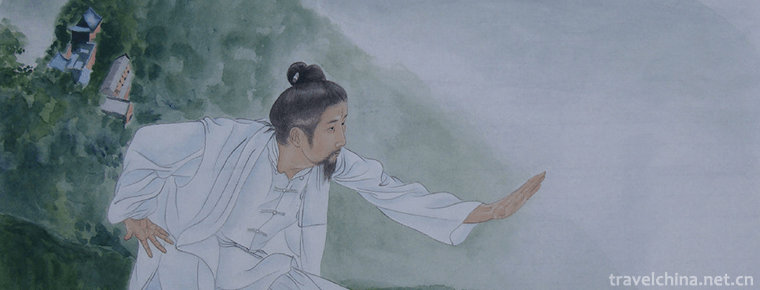
-
Mount Hua
Mount Hua, known as "Xiyue" and "Taihua Mountain" in ancient times, is one of the five famous mountains in China and the birthplace of Chinese civilization.
Views: 339 Time 2018-10-30 -
Sannong Expo Park
Shenyang Sannong Expo Park is located in the south of Daliutun Town, Xinmin City, Liaoning Province. It is 15 kilometers away from Xinmin City and 75 kilometers away from Shenyang City. It was built i.
Views: 119 Time 2018-12-18 -
Wuyuezhai Scenic Area
Wuyuezhai Scenic Area, National Forest Park, AAAAAA Tourist Area, is located in the eastern foot of Taihang Mountain, located in the northwest of Lingshou County, Hebei Province.
Views: 165 Time 2018-12-22 -
White Horse Temple Baima Temple
Baima Temple is located in Baima Temple Town, Luolong District, 12 kilometers east of the old city of Luoyang City, Henan Province. Founded in the eleventh year of Yongping in the Eastern Han Dynasty .
Views: 179 Time 2019-01-02 -
Salar Costume
The traditional dresses of the Salar nationality are bright and bright in color and full of national characteristics. Salar costumes have two characteristics, namely (1) Islamic color of costumes; (2).
Views: 127 Time 2019-06-11 -
Silk weaving skills in Suzhou
Tilting, also known as carving, is an ancient and unique traditional weaving process in China. It mainly exists in Suzhou and its surrounding areas. Since the Southern Song Dynasty, Suzhou silk has be.
Views: 344 Time 2019-06-17 -
Uygur Folk Songs
Uygur folk songs are rich in content, which can be divided into two parts: traditional folk songs and new folk songs. Traditional folk songs include love songs, labor songs, historical songs, Life son.
Views: 158 Time 2019-06-26 -
Legend of West Lake
The legend of West Lake is one of the local folklores in Hangzhou, Zhejiang Province. It is a national intangible cultural heritage list. Xihu beautiful mountains and rivers, snowflakes and moons, sin.
Views: 129 Time 2019-07-01 -
Sichuan University of Arts and Science
Sichuan Academy of Arts and Sciences, located in Dazhou City, Eastern Sichuan Province, has a history of running higher education which can be traced back to Longshan Academy in late Qing Dynasty, whi.
Views: 145 Time 2019-08-31 -
Bi Sheng
Bi Sheng (about 971 years to 1051) was promoted to Hubei, Huanggang, Hubei. Yingshan County One of the great inventors of ancient China, the inventor of the five great ancient inventions of ancient Ch.
Views: 216 Time 2019-09-06 -
Meishan population
At the end of 2019, the total registered residence population was 3 million 422 thousand and 600, of which 1 million 194 thousand and 900 were urban population. At the end of the year, there were 2.995 million permanent residents, including 1.433 million urban.
Views: 333 Time 2020-12-18 -
Dazhou culture
Baqu culture refers to the fact that Dazhou city is located in Bashan canal and belongs to Badi in ancient times. The chapter of Baqu customs is listed in the ancient book Taiping Huanyu Ji thousands of years ago; the second refers to the unique cultur.
Views: 364 Time 2020-12-20
